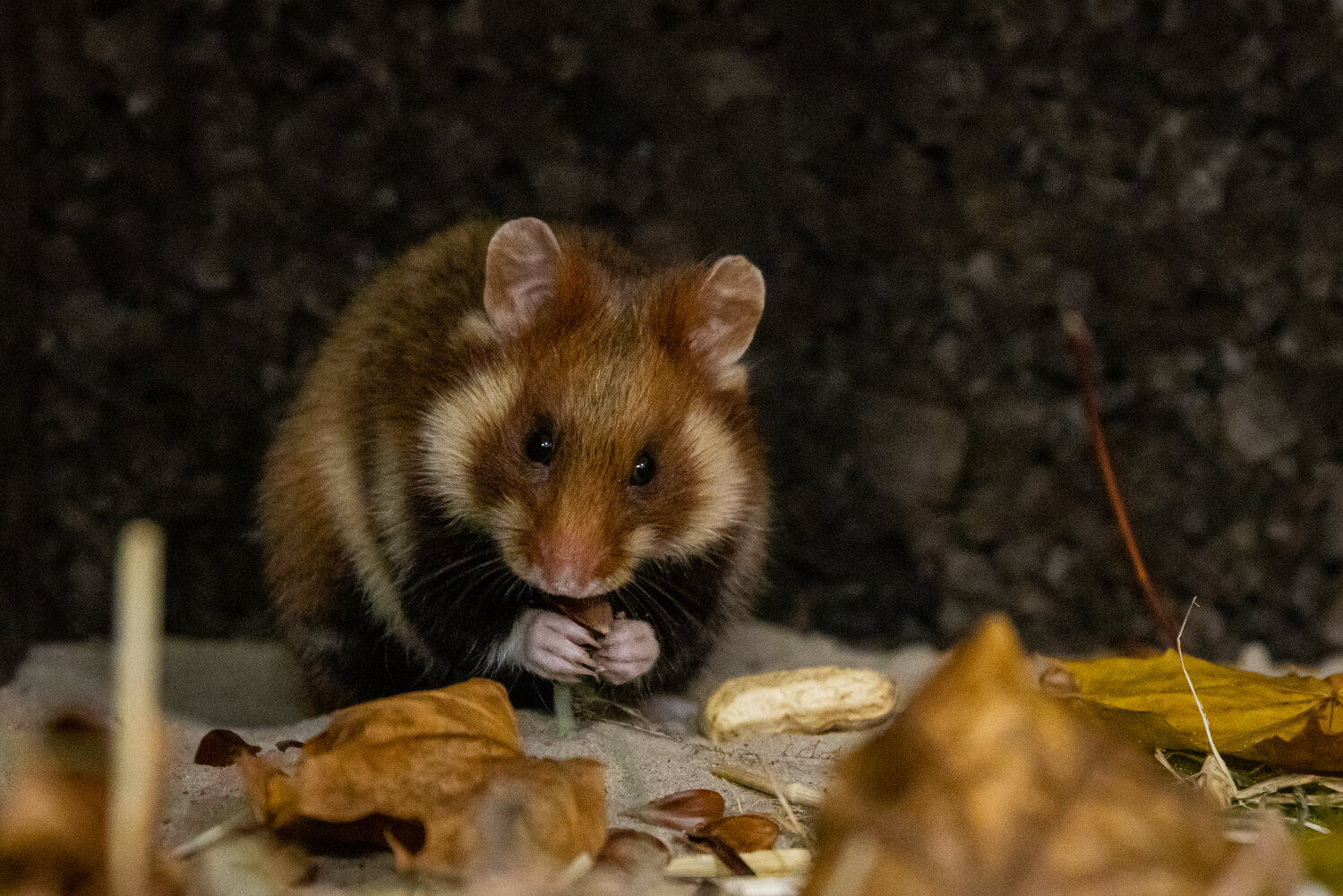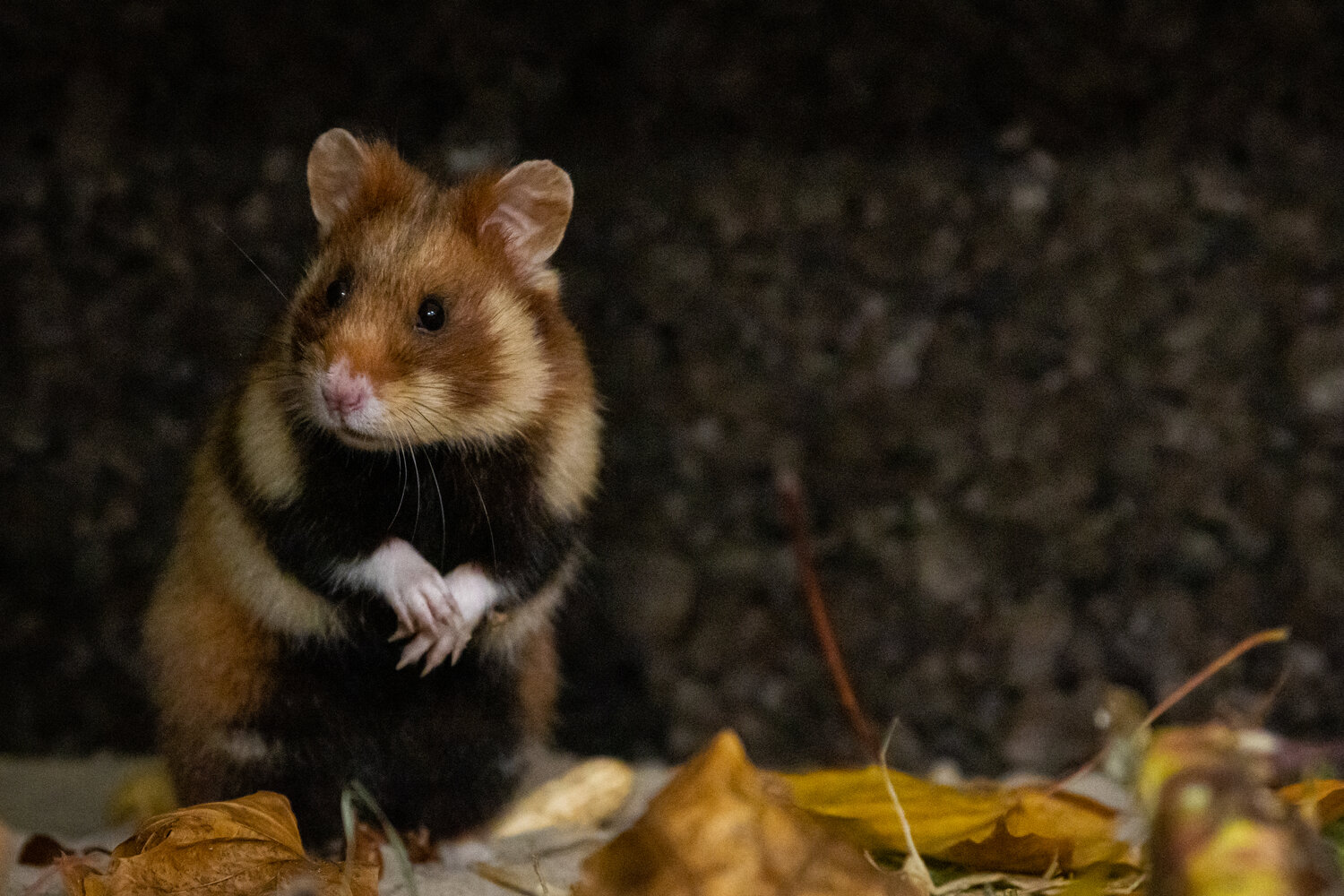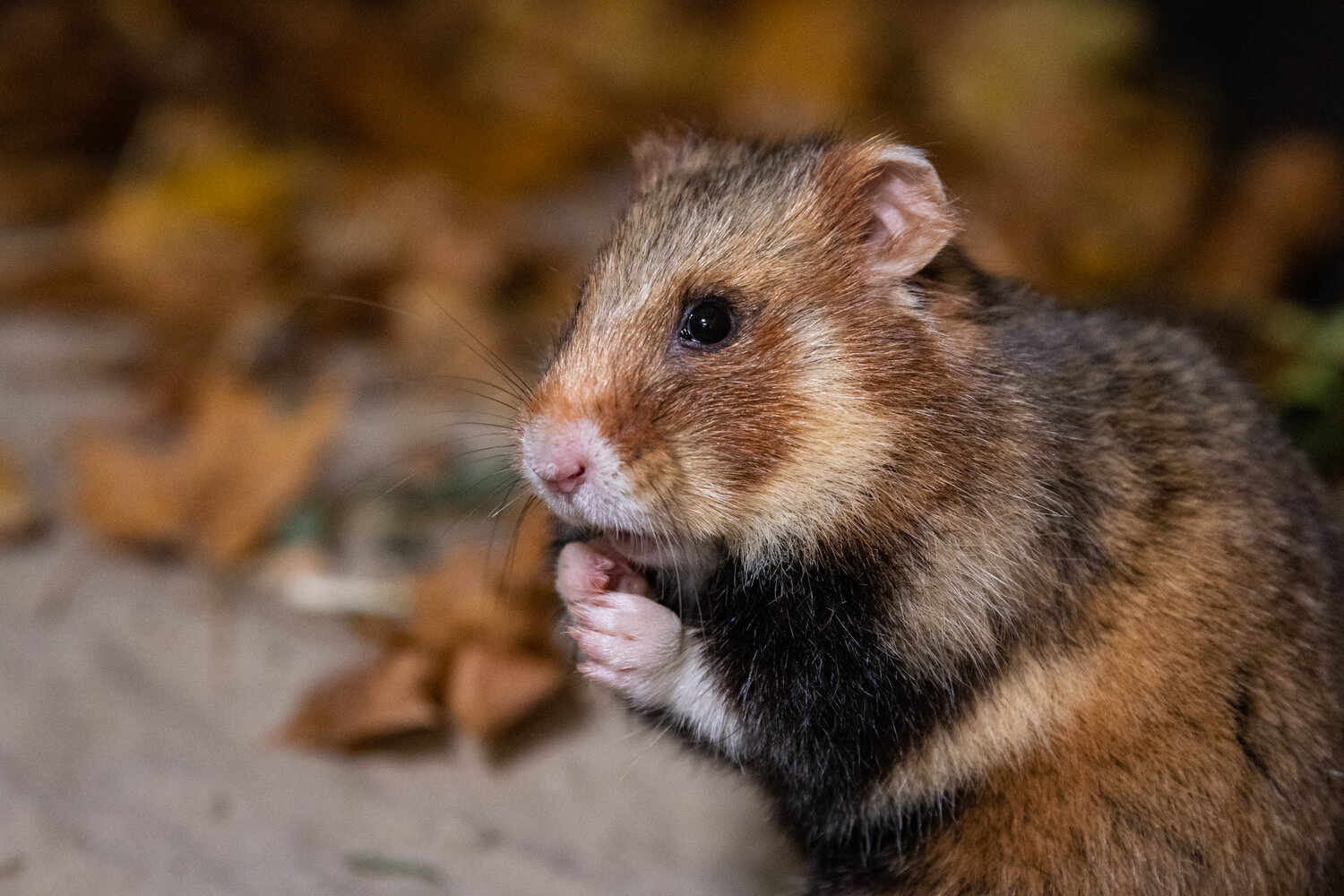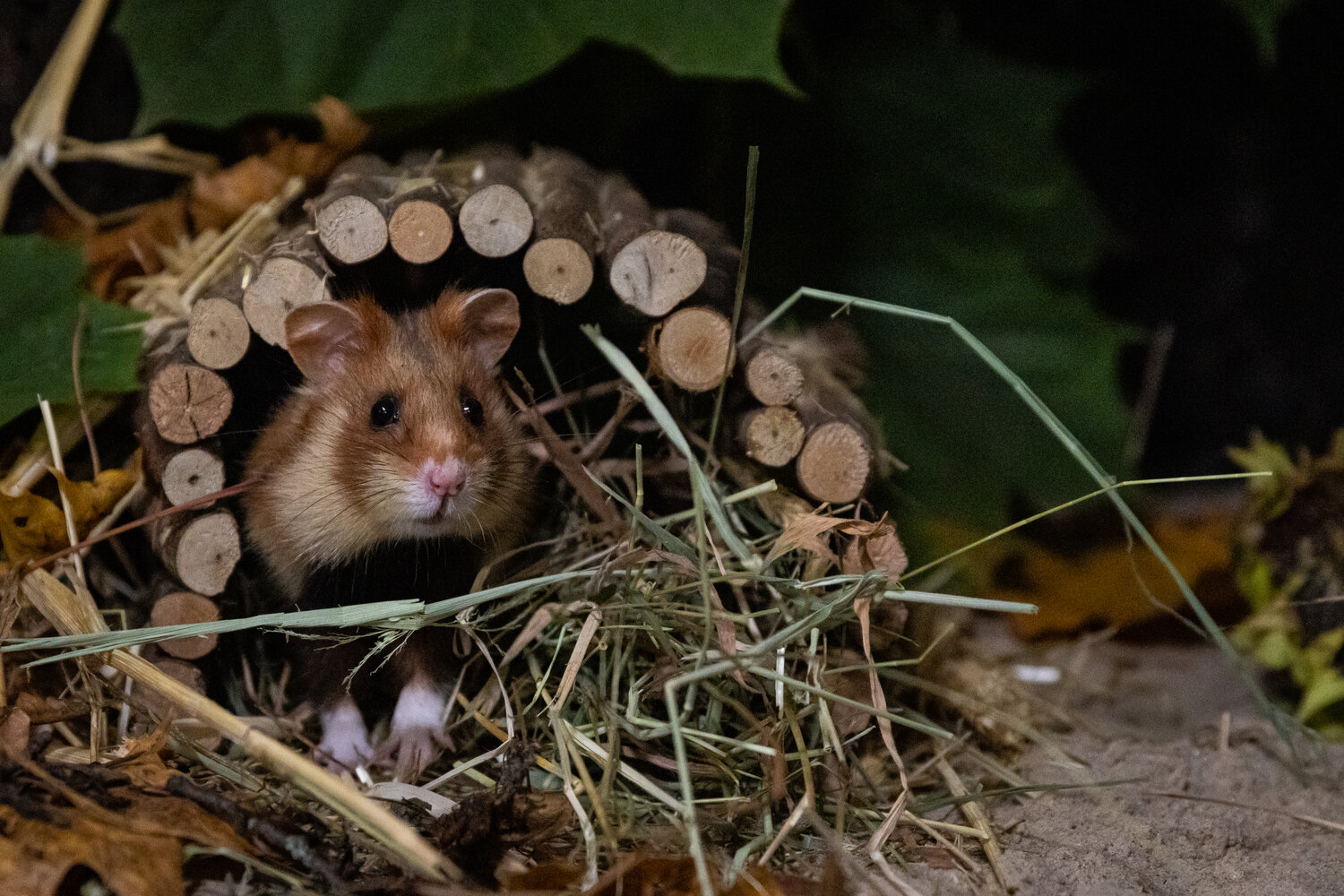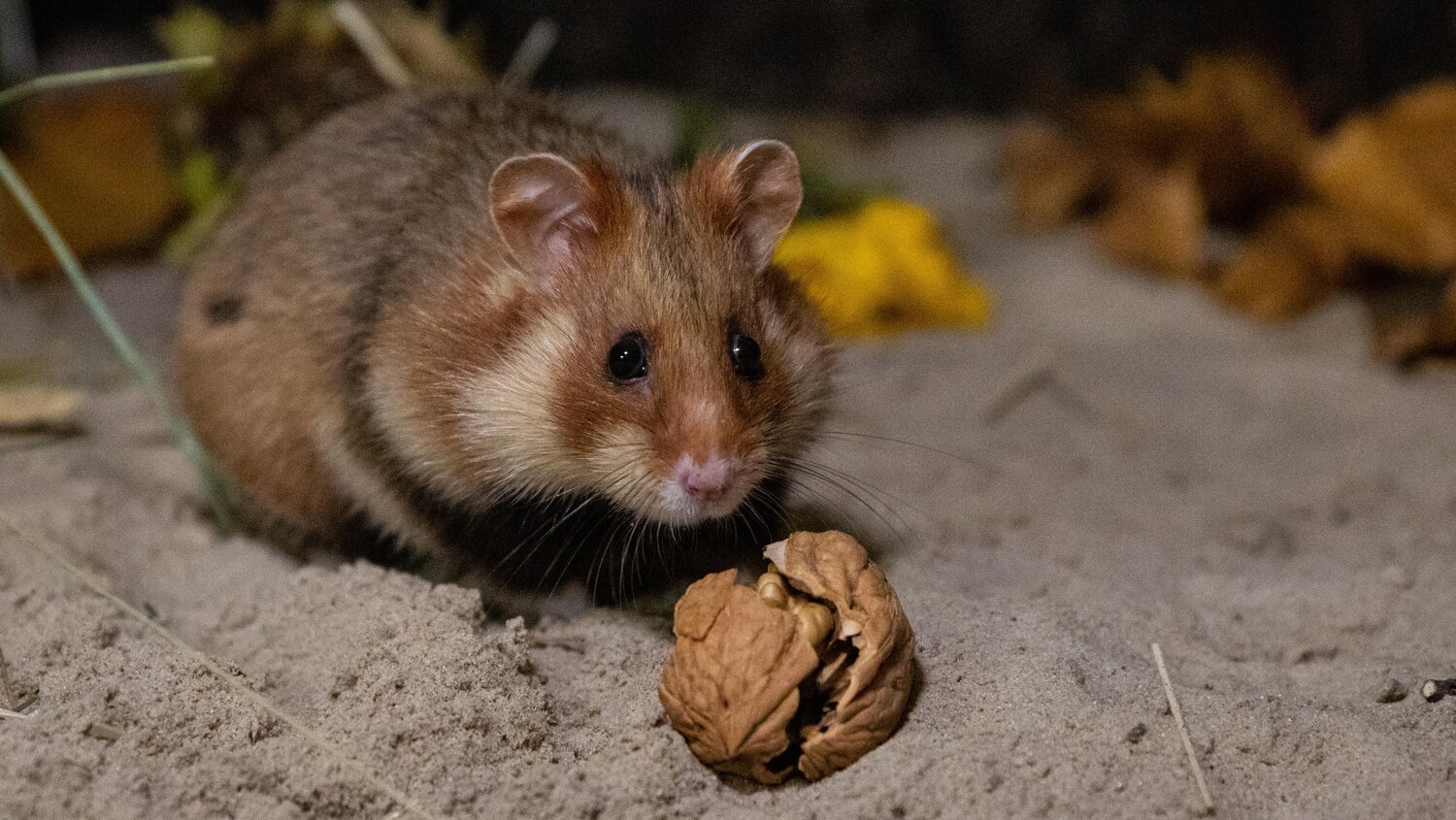Many animals avoid the freezing cold and scarce food over winter by spending several months in hibernation. The European hamsters at Tierpark Berlin are well prepared for an energy-saving winter: they have already created cosy burrows and collected ample supplies for their winter rest. The Tierpark started breeding the endangered rodents this year at its new breeding and research station. “Our European Hamster Station currently houses 18 of the animals, and has space for more than 50,” says Christian Kern, Zoological Director of Zoo and Tierpark Berlin. “In the future, we will work together with partner organisations to release Berlin-bred hamsters into suitable habitats in the German state of Lower Saxony.” Areas of arable land where crops such as alfalfa are cultivated in regular strips provide a particularly good habitat for European hamsters. The Tierpark’s project partners also encourage farmers to leave some strips of grain standing after harvest to provide the native rodent with food and cover. Farmers participating in the project are compensated for any crop losses and the additional effort involved.
Saving energy over winter
Going into energy-saving mode during the colder months is commonplace for many animal species, but not all states of dormancy are technically hibernation. True hibernation, such as that experienced by European hamsters, involves extreme reduction of all metabolic processes: body temperature drops to about three degrees Celsius, breathing rate falls to an average of one breath per minute, heartrate slows to an average of five beats per minute, and brain activity ceases almost completely. “But European hamsters don’t simply go to sleep in autumn and wake up in spring – they interrupt their hibernation with frequent short breaks,” explains Tierpark curator Maren Siebert. “Their sleep phases vary in length from a few days to a few weeks, and the brief periods of wakefulness are necessary for them to meet their minimum food intake.” The European hamster has developed two techniques to survive the colder months: it either builds up fat reserves or it stockpiles supplies like nuts and grains. The chosen strategy depends largely on the individual’s sex – while males hoard only a few supplies and mainly rely on fat reserves, females tend to store up to 4 kg of food for the winter. This phenomenon, rarely observed in other hibernating species, is related to the European hamster’s reproduction strategy: females give birth to up to three litters per year and raise the young alone, leaving them very little time to build up sufficient fat reserves prior to hibernation.
And yet, despite its ingenious tricks to survive the cold, the European hamster is one of Germany’s most endangered mammals – and is already extinct in some states. The greatest threat to their survival is intensive agriculture, particularly the cultivation of energy crops instead of cereals, early and more efficient harvesting, and the use of chemical agents to control rodents. Scientists estimate that there are only 10,000 to 50,000 European hamsters still living wild in Germany.
By the way: The European Hamster Station is located on the Tierpark’s farm and cannot be accessed by regular visitors. In future, however, visitors will be able to see the hamsters on special guided tours.
